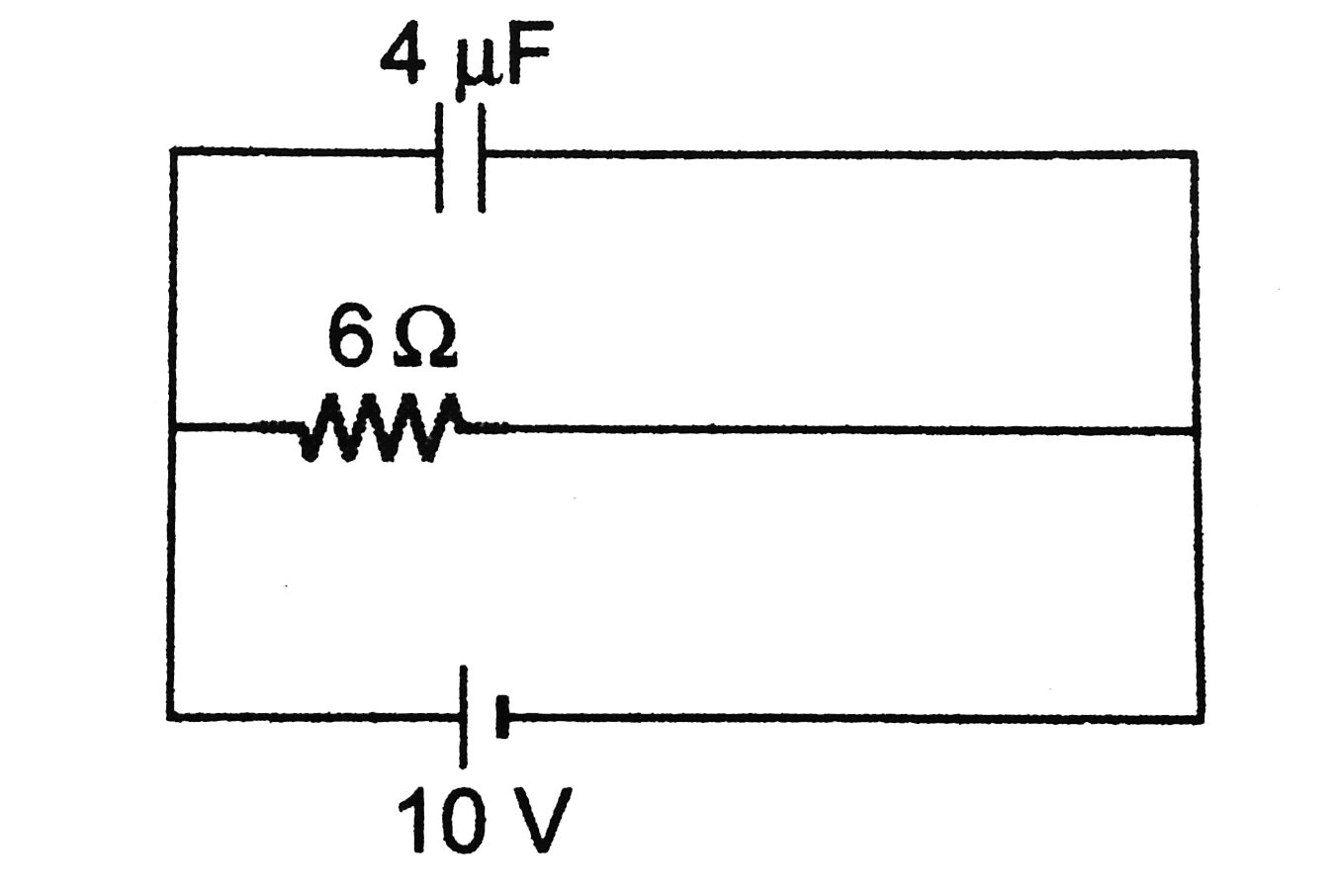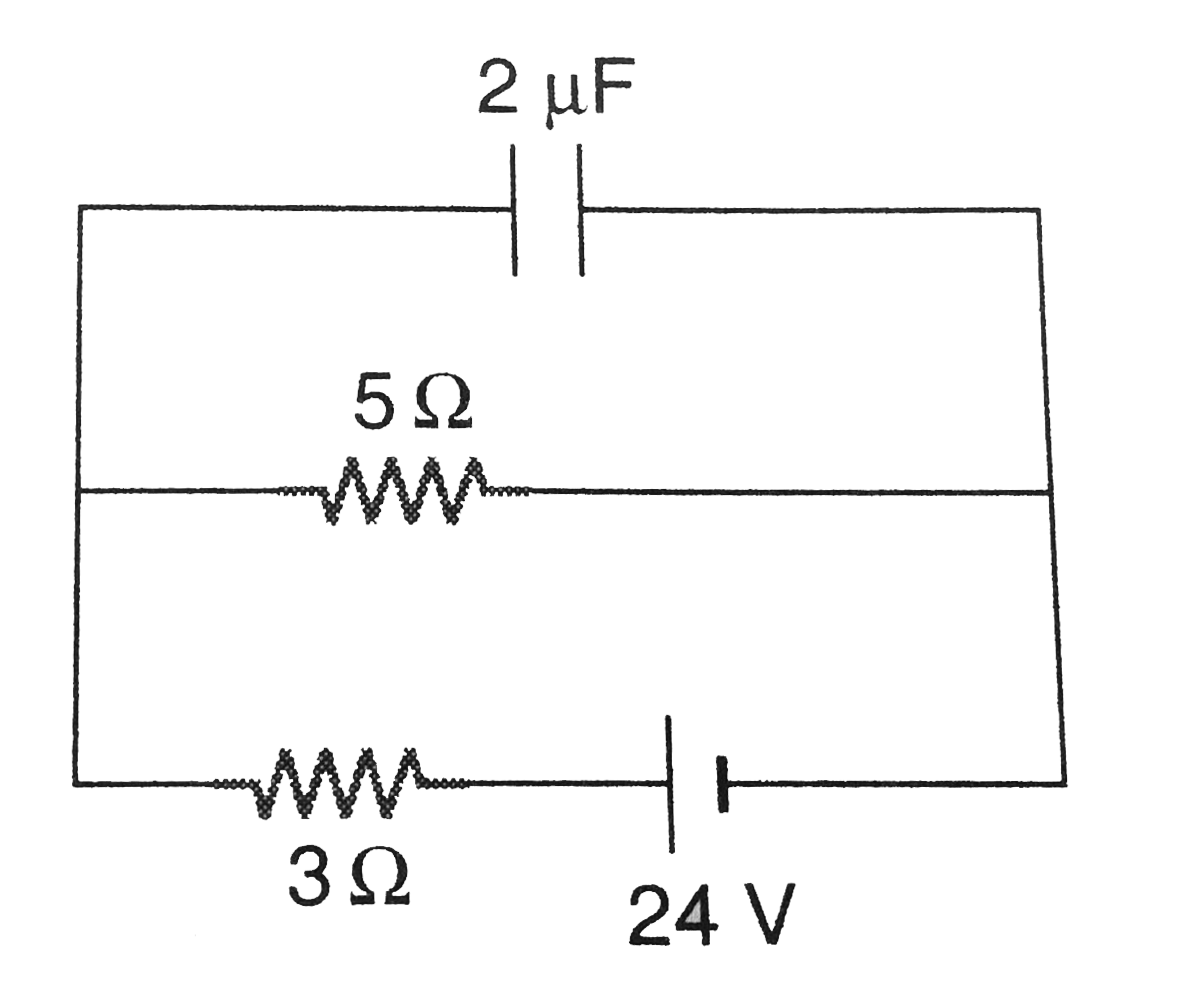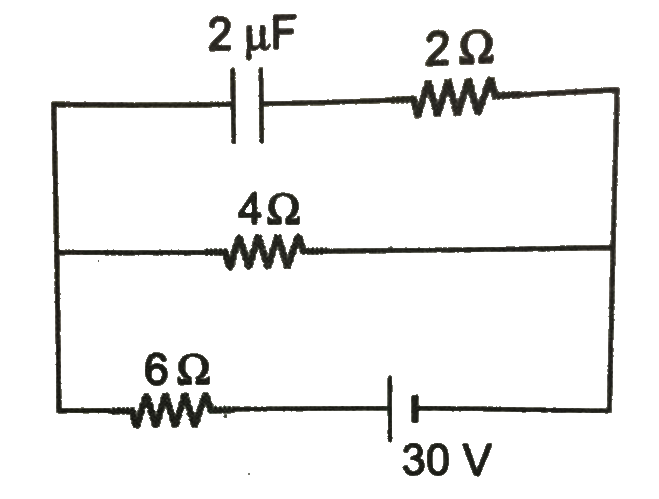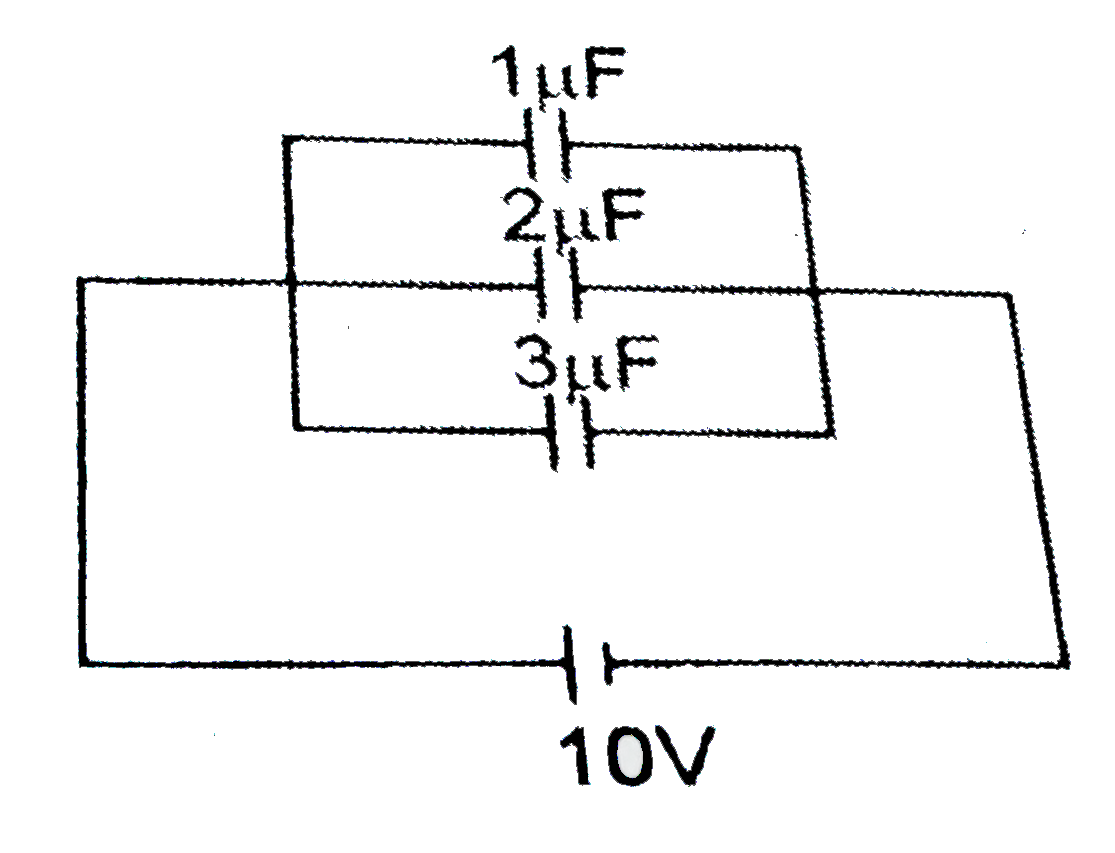How many percent of work done by a battery is consumed to fully charge a capacitor which is stored as electric potential energy in the capacitor ?
25
50
70
100
The correct Answer is:B
Step by step video & image solution for How many percent of work done by a battery is consumed to fully charge a capacitor which is stored as electric potential energy in the capacitor ? by Physics experts to help you in doubts & scoring excellent marks in Class 12 exams.
Updated on:21/07/2023Similar Questions
A battery does 200 J of work in charging a capacitor. The energy stored is.
View SolutionFind the charge stored in the capacitor.

View SolutionFind the charge stored in the capacitor.

View SolutionFind the charge stored in the capacitor.

View SolutionThree initially uncharged capacitors are connected to a battery of 10V is parallel combination find out following
(i) charge flow from the battery
(ii) total energy stored in the capacitors
(iii) heat produced in the circuit
(iv) potential energy in the 3μF capacitor.

View SolutionA 900 pF capacitor is charged by 100V battery.
(a) How much electrostatic energy is strored by the capacitor ? The capacitor is disconnected from the battery and connected to another 900 pF capacitor. How much is the electrostatic energy stored in the system ?
View SolutionA 12 pF capacitor is connected to a 50 V battery. How much electrostatic energy is stored in the capacitor ?
View SolutionThree capacitors having capanctances 20μF,30μF and 40μF are conneceted in series with a 12V battary. Find the charge on each of the capacitors. How much work has been done by the battery in charging the capacitors?
View SolutionAn uncharged capacitor is connected in series with a resistor and a battery. The charging of the capacitor starts at t=0. The rate at which energy stored in the capacitor:-
View SolutionSTATEMENT-1 : If the distance plates of a charged isolated capacitor increases, then the potential energy in the electric field of capacitor increases.
and
STATEMENT-2 : The energy stored in a capacitor is always directly proportional to separation between the plates.
View Solution
